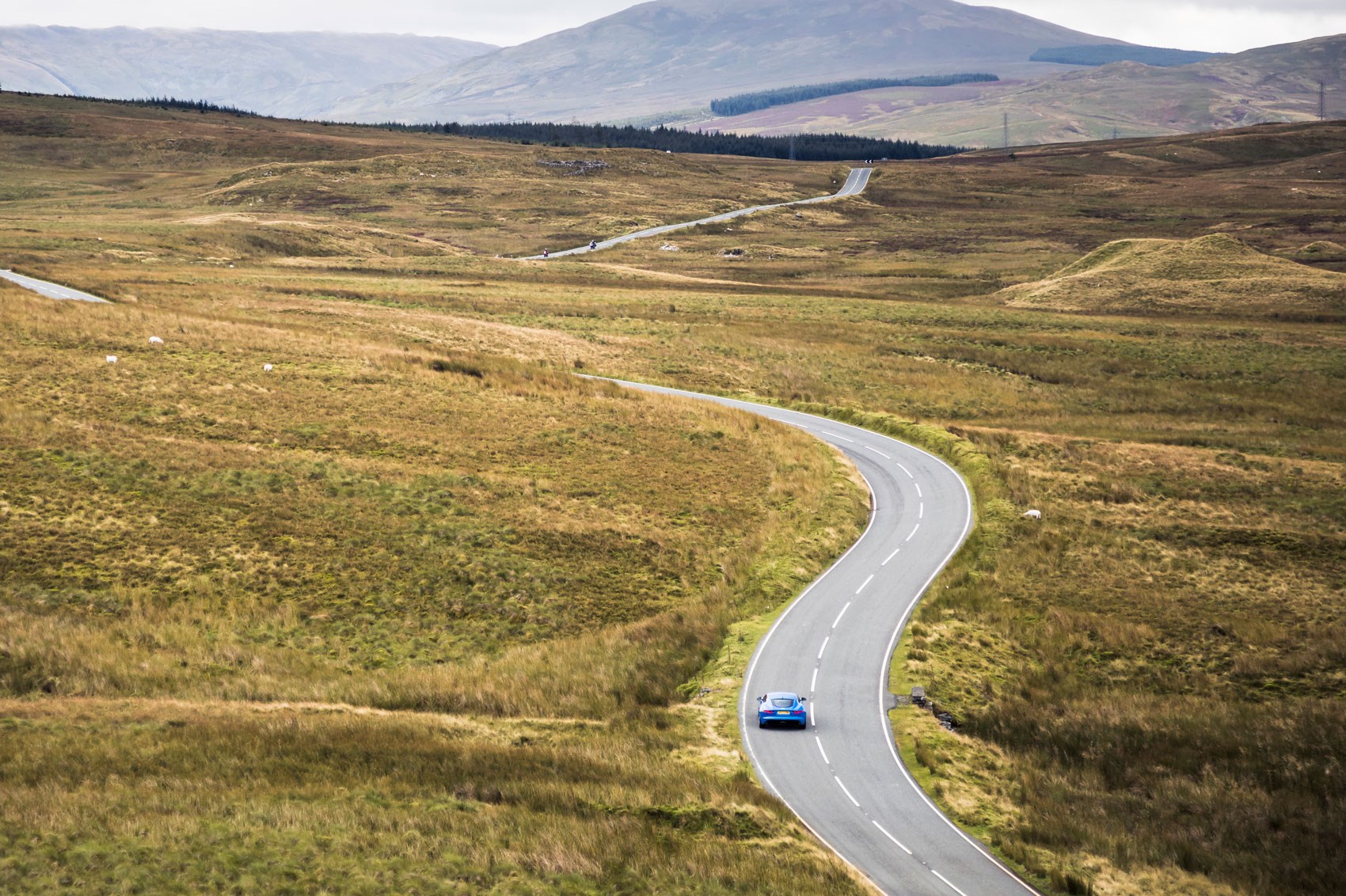► Four-pot F-type tested
► Better than a Cayman?
► Priced from under £50k
When Jaguar first plotted the F-type, there was no four-cylinder model in the product plan, only sixes and eights. But since its launch, the landscape has shifted: JLR’s new four-cylinder Ingenium engine line-up has come on stream, and Porsche has started fitting flat fours to Boxsters and Caymans.
Putting a four in the F-type not only made sense, it was inevitable. The new model drops the F-type price of entry to £49,900, at least £2.3k below the 335bhp V6 with a manual transmission, previously the most affordable model.
We’ve got a day to find out if it still feels like a true F-type, with a drive over some challenging Welsh roads.
How does the four-cylinder stack up against the V6 on paper?
The Ingenium is a 2.0-litre turbocharged all-aluminium, direct-injection four. With 296bhp and 295lb ft it gives up just 39bhp/37lb ft to the base V6 (there’s also a more powerful V6, remember), but drops the kerbweight by 52kg to 1525kg, and returns 39.2mpg and 163g/km, savings of 6mpg and 36g/km. The 5.7sec 0-62mph time and 155mph top speed are down 0.4sec and 7mph on the V6, but are hardly shabby.
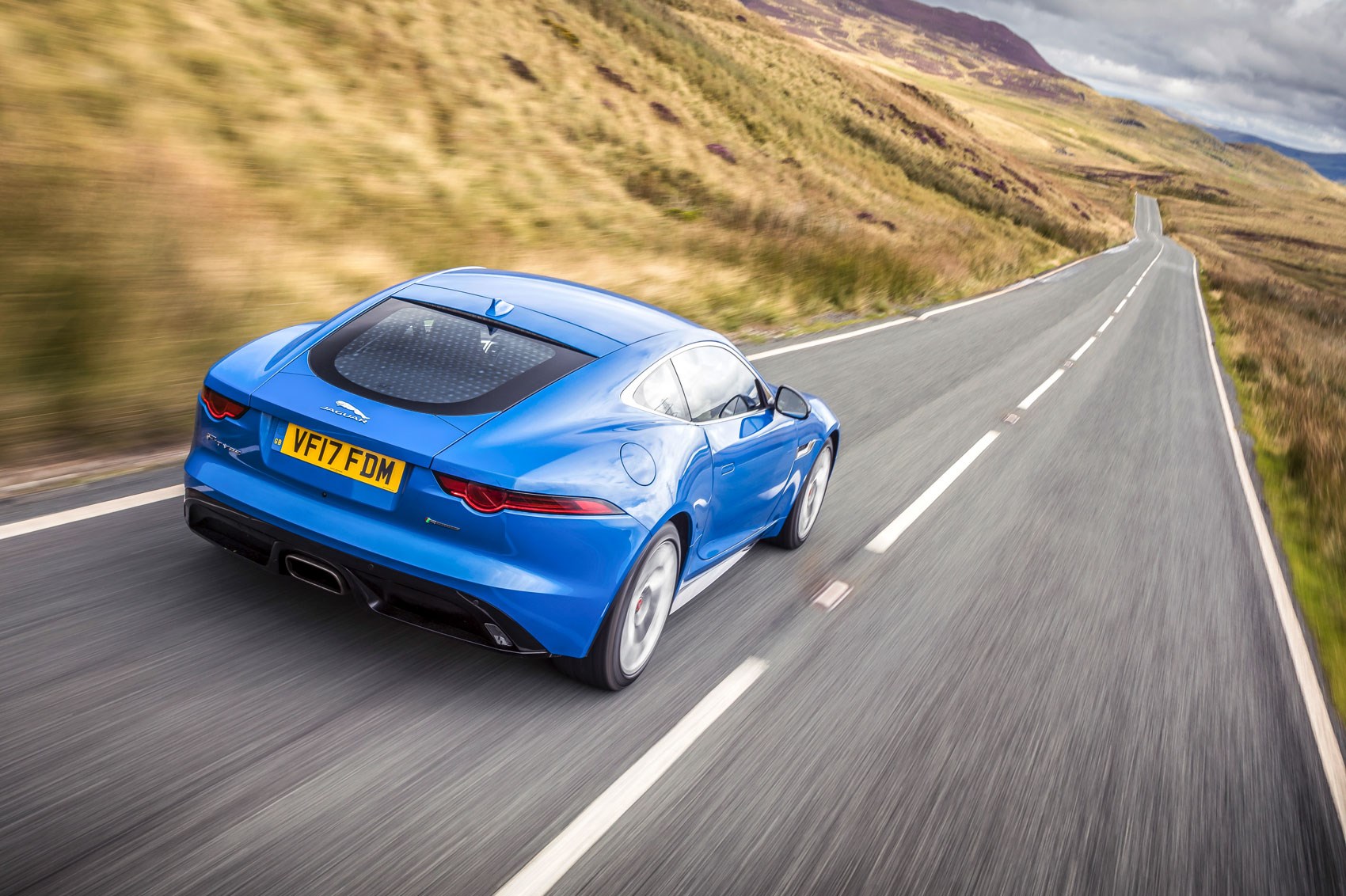
There’s no option of all-wheel drive, which is logical enough on an entry-level model, so too that you get only passive dampers, not the clever continuously variable stuff, and that there’s no limited-slip diff. Perhaps apparently less logical is the decision not to offer the manual six-speed manual transmission. That’s until you learn that the three-pedal V6 F-type has proved a slow seller, so all four-cylinder models are equipped with the eight-speed automatic. I know, we all bang on about the death of manuals, and then no-one buys one when given the chance.
The chassis is lightly tweaked, with spring rates dropped 4 per cent at the front (there’s less engine to support), 3 per cent rear.
Any visual differences?
There’s very little to differentiate a four from a V6 or V8. The standard alloy wheels are 18 inches in diameter, not 19 inches, but buyers will probably remedy that with a flourish of pen on the options list.
Other than that, the key identifier is the central exhaust outlet. The rest is just as gorgeous as a V6 or a V8, including the interior, which remains the best of any modern Jaguar with its snug, cockpit-like architecture and low-set driving position.
How does a four-cylinder F-type drive?
It’s very good, if not flawless. Throttle response of this turbocharged F feels much mushier after the zing of the supercharged models, and the electrically assisted steering is different too. Had the latter not been recalibrated and a lighter engine inserted under the bonnet, the engineers say the helm would have felt too darty.
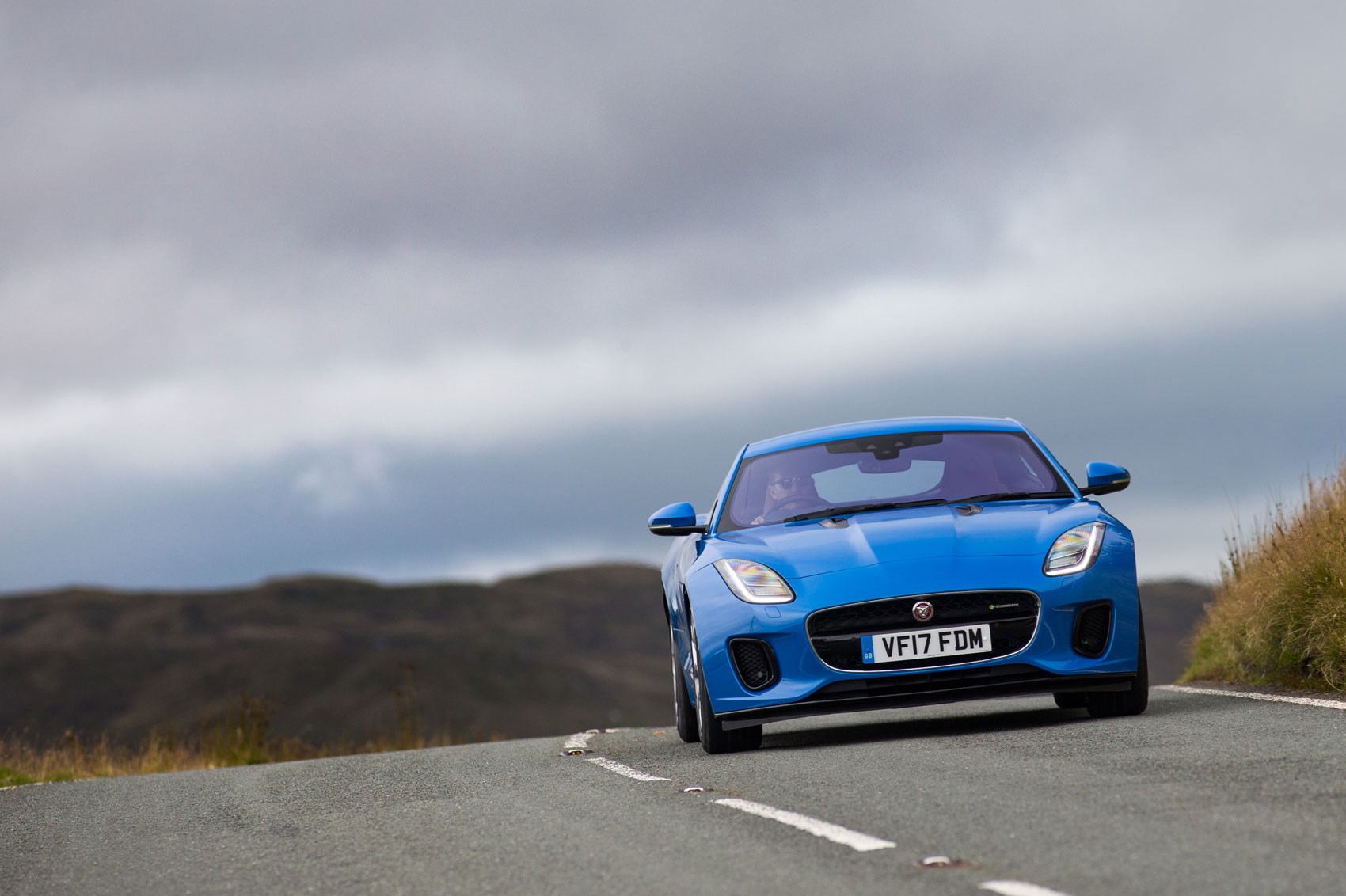
Instead, they’ve added some weight, counteracting that effect. It’s precise and accurate, but it feels too keen to self-centre and lacks surface feedback – it’s not a deal-breaker and doesn’t particularly detract from the experience, it just doesn’t add as much as it could.
That’s the bad news done with, because the rest is good. With less weight over the nose, it’s immediately apparent that the four-cylinder model turns in more eagerly than its more powerful siblings, making it feel more agile and energetic in the way it responds to steering inputs.
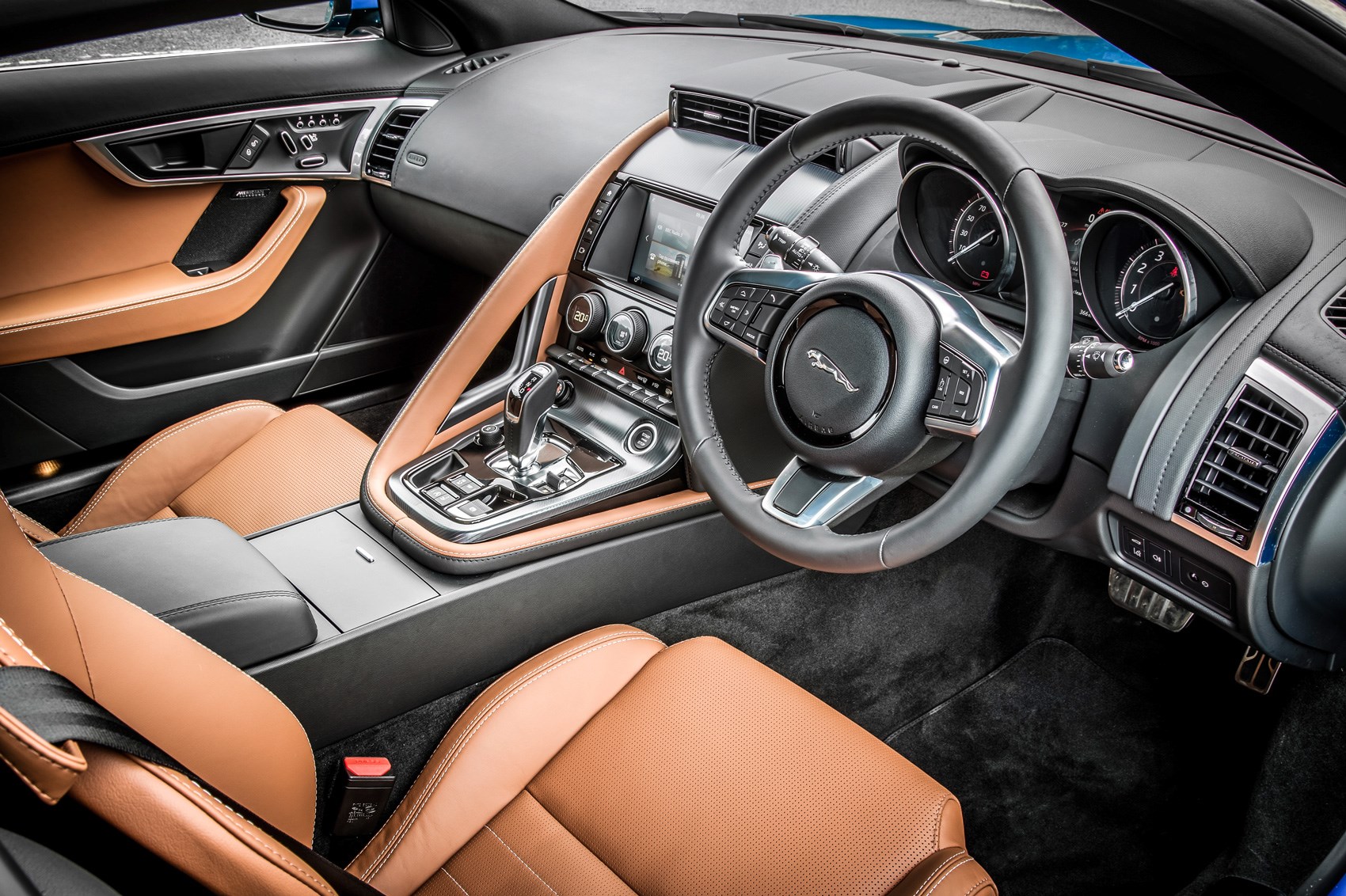
It also seems more adjustable off-throttle than other F-types I’ve driven, which, I think, have all been equipped with adaptive dampers. You notice the weight moving around more at the rear end during the early phase of a corner, and you can exploit that to make the rear slide just a fraction; it adds to the sensation that this is a very nimble, playful kind of F-type.
We drove both the convertible and coupe, and it was pretty remarkable how much stiffer and cohesive the coupe felt. The convertible was much fussier in the way it rode.
You’ve barely touched on the engine yet! How does it feel, how does it sound?
Ah yes, the important bit. The V6 and V8 models sound sensational, so you inevitably lose something along with a couple of cylinders. But it doesn’t disappoint in the way, say, those Caymans and Boxsters do. The Ingenium has a fruity, brappy kind of exuberance that – just like its front-end response – really adds to the sense of energy; it has a very different character to the same engine in other JLR products, and reminds a little of a hot VW four, and there’s nothing wrong with that.
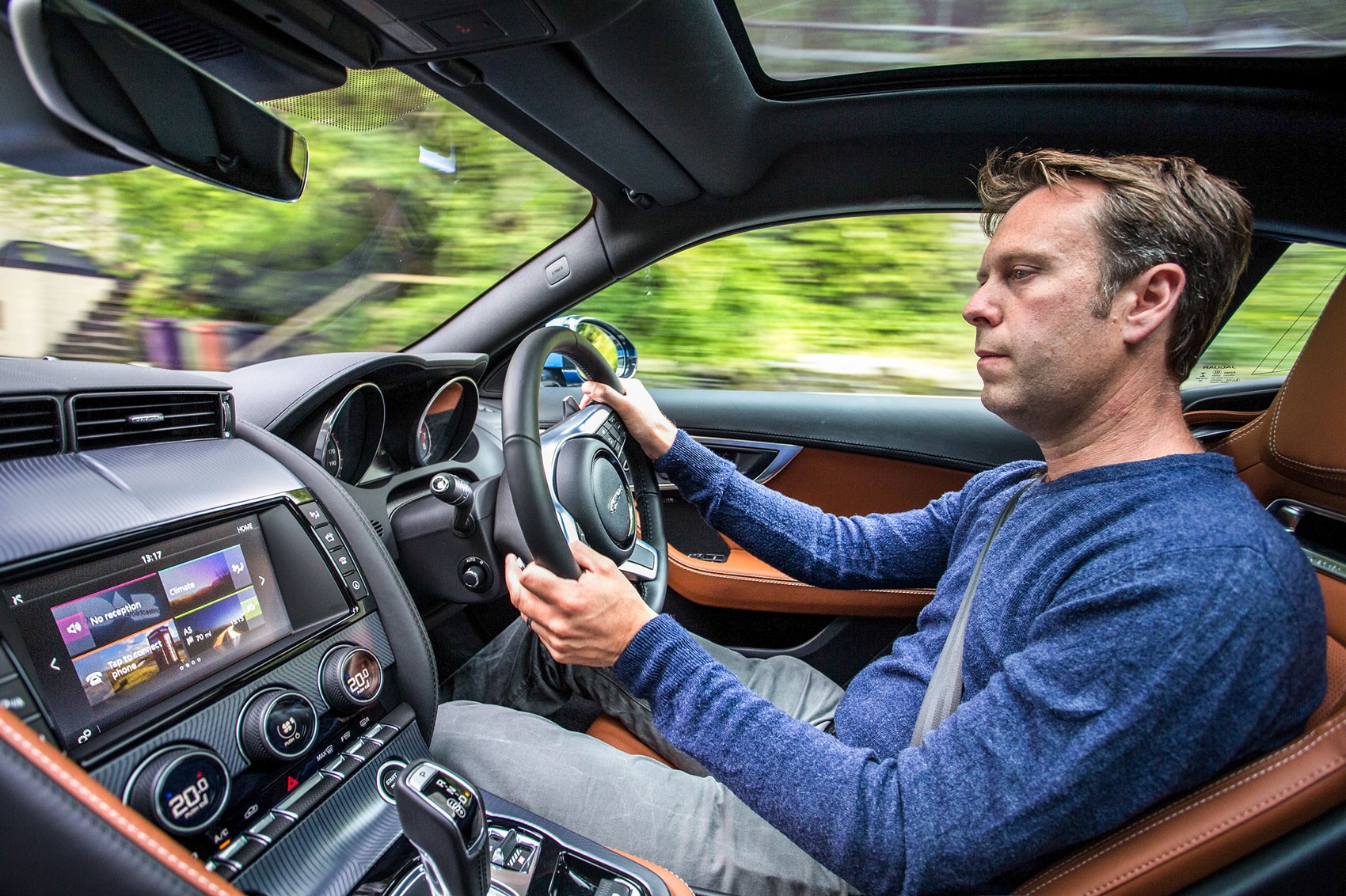
This is not an engine to string out at high revs and marvel at the sonic majesty of it all, but ride the mid-range torque, keep within the bassier frequencies of the powerband, and it’s very enjoyable. You even get thunderclaps on the overrun, just like the ‘big’ F types.
As all that suggests, the four-cylinder F has a markedly different power delivery to its supercharged big brothers too, and although it actually has less outright torque than a V6, it feels like there’s more right at the bottom of the rev range. That means you can make the rear tyres work quite hard in low gears, and there’s an enjoyable interactivity and sense of mischief to that.
Push on through the revs and there’s plentiful muscle in the mid-range, if little point pushing much beyond 5500rpm. The eight-speed auto helps keep you in the powerband, shifting quickly and with pleasingly physical slaps of engagement and a frisky aural accompaniment that adds another dimension to the experience too. Even if you could buy a manual (which you can’t), I’d choose the auto.
Verdict
A few small flaws aside, adding a four-cylinder Ingenium engine into the F-type mix is a success. Jag’s entry-level sports car is lighter, more nimble, plenty rapid enough to get your kicks and work the chassis, and of course it’s more fuel efficient too. It evens summons a pretty rousing soundtrack, though the V6 and V8s remain more compelling.
The biggest problem could be the price. The cheapest four-cylinder F-type costs £49,900. That means the jump to a 335bhp V6 with a manual gearbox is just £2365, or a V6 auto £3665. I’m not sure I’d deny myself a V6 with that kind of saving on offer, and there’s an excellent insight into how this all stacks up – or perhaps not – on a finance deal on our sister site, Parkers.
Perhaps the four-cylinder F-type would make a more compelling case for itself if the V6 was dropped, and only the more powerful 380PS V6 S offered. But we’ll park that dilemma with the product planners. Without that context, an F-type that’s two cylinders short of a V6 isn’t the madness it might have seemed seven or so years ago.
Check out the rest of our Jaguar reviews here
